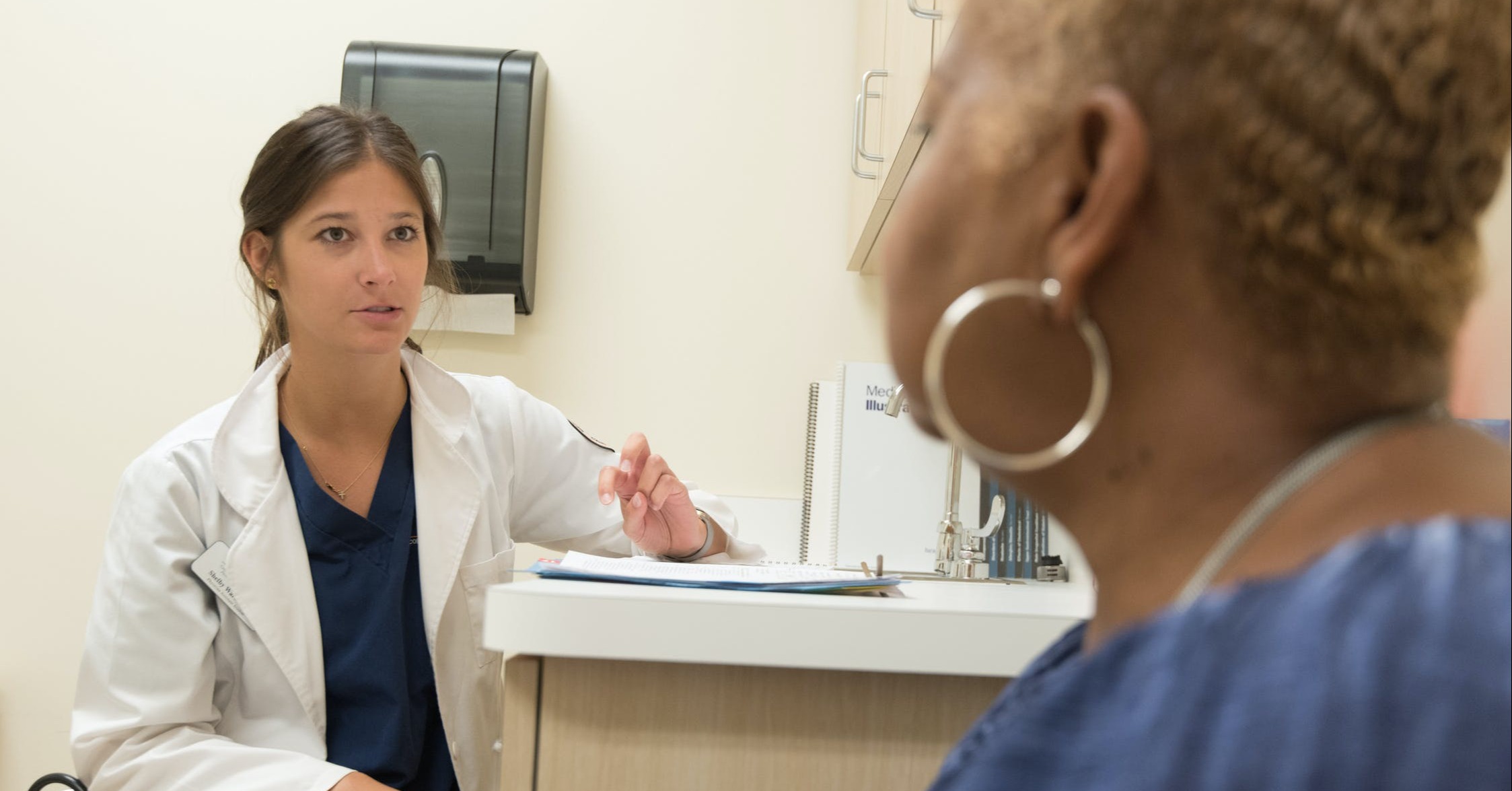
Physician Assistant vs. Doctor: What Is the Difference?
Physician assistants diagnose and treat patients, prescribe medication, and perform [...]
Osteopathic medicine may just be the fastest-growing segment of health care that most people have never heard of. In 2017, the number of practicing osteopaths in the United States exceeded 100,000, representing a 65 percent increase from 1990.
For comparison’s sake, in 2016 there were just over 870,000 MDs in the United States. If you’re looking, an osteopath shouldn’t be too hard to find.
So, what are osteopaths?
And they do it all without an MD behind their names.
Becoming an osteopath means taking the road less traveled in medicine. According to the American Osteopathic Association (AOA), Doctors of Osteopathy (or DOs) only represent 6 percent of the total US physician population.
Why aren’t there more DOs? Dr. Jessica Freedman shared one theory in an article for U.S. News & World Report, writing: “My work with students has made me realize how many of them put too much emphasis on the initials that will follow their names. Many won’t even contemplate osteopathic medical school because they want only an MD after their names.”
Can you see yourself practicing the kind of medicine that looks at the whole person and creating lifelong partnerships with your patients? Are you willing to let go of the idea that you’re only a doctor if you have an MD after your name? Then read on to learn more about how to become an osteopath.
In this article, we’ll cover:
Osteopathic medicine is real medicine, and osteopaths are licensed doctors, as are MDs. In fact, osteopaths make up roughly 10 percent of the doctors in the U.S. (a figure that’s expected to double by 2030). They see patients, diagnose illnesses and injuries, and provide the necessary treatments, but osteopaths usually take a more integrative, empathetic, and comprehensive approach to patient care.
Osteopathic medicine tends to focus not only on treating what’s wrong, but also on helping people get and stay well. Treatment plans created by a DO may include preventative strategies, spinal manipulation, and massage in addition to tests and medication. Becoming an osteopath means treating the whole person—not just the disease.
One of the biggest differences between allopathic doctors (MDs) and doctors of osteopathy has to do with education.
The curriculum is largely the same, though osteopaths may spend more time learning about holistic care, the value of communication in preventative medicine, and patient education. They will also devote about 200 hours of med school studying hands-on musculoskeletal manipulation.
Another key difference between DOs and MDs is philosophical.
A third difference is that DOs regularly employ osteopathic manipulative treatment (OMT). It’s like physical therapy in that it involves hands-on manipulation, but it is used to treat systemic problems in addition to muscle and skeletal issues. Maria Jones, a second-year medical student at the University of New England College of Osteopathic Medicine, told WBUR that osteopathic manipulative treatment is another tool in the healing process: “You don’t always have to revert to a position of pushing meds,” she said, expressing a central tenet of osteopathy.
How long does it take to become an osteopath? DOs must earn a bachelor’s degree, complete medical school, finish residency training, and pass their licensing exams. This takes a minimum of 12 years.
Like all doctors, osteopathic physicians begin their education in a four-year bachelor’s degree program. There’s no one undergraduate track for someone who wants to become an osteopath, but osteopathic medical schools prefer candidates who have taken courses in microbiology, physics, biochemistry, human anatomy, and calculus.
Many students assume that a bachelor’s degree in biology is the best choice for aspiring doctors, but biology majors actually have one of the lowest med school acceptance rates, according to an Association of American Medical Colleges report. Math and statistics majors had the highest acceptance rates, and humanities majors weren’t far behind. Of course, every osteopathic medical school will have its own criteria and preferences when it comes to admissions.
TIP: If you want to make yourself a more attractive candidate, the American Association of Colleges of Osteopathic Medicine(AACOM) recommends shadowing or interning with an osteopathic physician during your undergraduate years.
Your next stop will be four years of osteopathic college. Your first two years in osteopathic medical school will be spent in the classroom doing coursework in anatomy, physiology, biochemistry, pathology, family medicine, pediatrics, osteopathic principles, and osteopathic practices.
Your second two years will be spent doing clinical rotations. You’ll treat patients in departments like the ER, internal medicine, neurology, and radiology under supervision in hospitals and other clinical settings.
You may be surprised to discover that there are only about 31 accredited osteopathic medicine programs in the US.
Some of the top osteopathic programs can be found at:
Applying to osteopathic medical school means filling out the AACOMAS application and submitting a college transcript, MCAT scores, a personal statement, and a letter of recommendation from a practicing DO.
There’s a misconception out there that students who want to become physicians and surgeons and are having trouble getting into a traditional medical school program should apply to DO programs instead. The idea is that it’s easier to get into DO school because admissions professionals at these schools look for more than just academic excellence. Actually, the reverse is true. Enrollment is growing in osteopathic med schools, and the competition for open spots is fierce. Tens of thousands of candidates apply each year for just a few thousand openings.
Some people also believe that osteopathic medical school is easier, but the coursework and rotations are mostly the same in allopathic and osteopathic institutions. Don’t make the mistake of thinking you can breeze through DO school or that osteopathy will be an easier path.
After medical school comes the three- to eight-year residency—yet another similarity between allopathic and osteopathic medicine. Osteopathy students do have additional choices to make after graduating from medical school, however. Traditional med school graduates will take the United States Medical Licensing Examination (USMLE) before applying for residencies.
Most osteopathic residency admissions committees prefer that candidates take the Comprehensive Osteopathic Medical Licensure Exam (COMLEX).
Some osteopaths who want to join an allopathic residency program will take just the USMLE or both the USMLE and the COMLEX. Which exam you decide to take will depend on the specialties you want to pursue. It’s worth noting that by 2020, all residency programs in the US will be accredited by the Accreditation Council for Graduate Medical Education (ACGME).
Osteopaths are required to complete one year of general internship before moving on to a residency, but after that DO graduates can learn any specialty (including surgery) and can use the National Resident Matching Program just like MDs. Most DOs, however, end up choosing primary care medicine as their focus.
Each state has its own rules about how osteopaths are licensed, but generally to get a license to practice, DOs must graduate from an accredited osteopathic college, complete a specialty residency, and pass the COMLEX exam. Board certification generally isn’t necessary, but further accreditation or education for an osteopath may be required depending on the state. Osteopaths can become board certified in their specialty by taking qualifying exams given by the AOA in 18 different specialty areas plus additional subspecialties once they’ve finished their residencies.
More than half of all osteopaths practice in primary care fields like internal medicine, family practice, and pediatrics. They often work in rural and underserved urban areas. It isn’t that osteopathic medical schools are churning out family doctors, but rather that people who feel driven to specialize in primary care are attracted to osteopathy.
It’s true that more competitive specialties and residency programs may choose allopathic students over osteopathic medical students, but most DOs aren’t looking to match into those residencies anyway.
When you look at the benefits of being an osteopath, two stand out. One is the pay. According to the Hospital Careers blog, osteopaths can earn between $188,500 and $576,350 — which is about $25,000 to $365,000 more than your average MD.
If you feel driven to become a healer, not just a doctor, osteopathy may feel like the “right” kind of medicine for you to practice. You’ll get to treat the whole patient or, as William Mayo, president of the AOA, put it when talking to WBUR, “You don’t just look at the particular illness, <a href=”https://www.wbur.org/commonhealth/2018/08/17/osteopathy-medicine” target=”_blank” you look at the patient behind the illness and approach it that way.”
You’ll probably have to explain what a DO actually is to those unfamiliar with this branch of medicine. Your credentials won’t be recognized in some countries. But that’s about it for negatives, and these small drawbacks will be no big deal when you’re practicing the kind of empathetic, hands-on medicine that osteopaths are known for.
Only you can make that call, but chances are that if you’ve read this far and are intrigued by this discipline’s holistic approach, it could be a very good fit.
Questions or feedback? Email editor@noodle.com

Physician assistants diagnose and treat patients, prescribe medication, and perform [...]

Physician assistants must pass the National Commission on Certification of [...]

There's a vast universe of healthcare providers beyond the ranks [...]

The Sooner State might seem like an unlikely destination for [...]

There are many excellent physician assistant programs in Pennsylvania. We've [...]
Categorized as: Medicine, Nursing & Healthcare